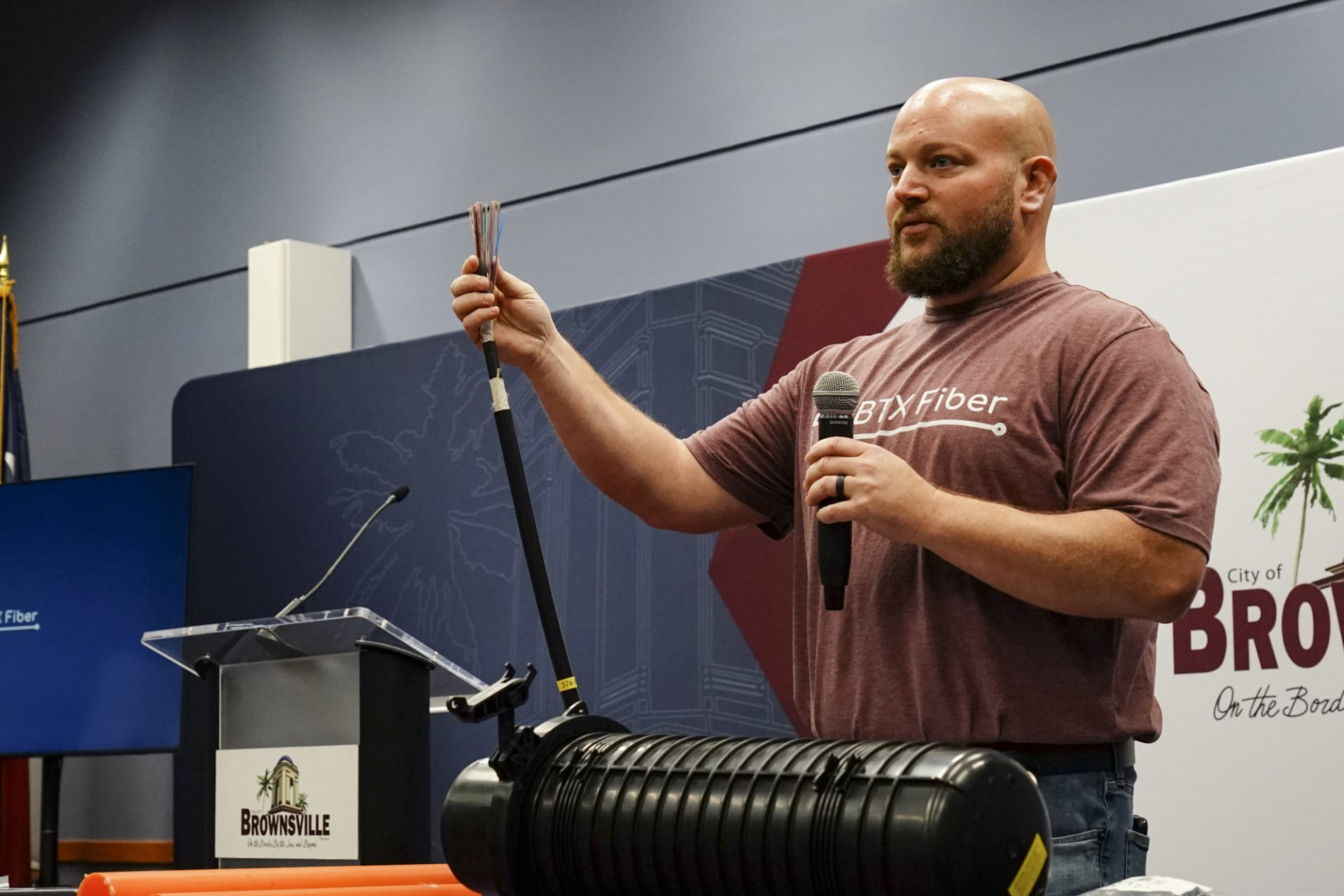No gold-painted shovels or hardhats at this groundbreaking, though officials did gather inside the Brownsville Public Library Main Branch Tuesday to celebrate the start of BTX Fiber project, which will provide high-speed, fiber internet service to every home and business in the city.
Brownsville Mayor Trey Mendez said the project was at least three years in the making and became a priority for him and the city commission after Brownsville was twice consecutively ranked among the least connected places in the United States.
“In Brownsville, for us being on that list for two years in a row, and maybe even longer, was completely unacceptable,” he said.

Such a wide “digital divide” placed Brownsville’s residents in the “have not” category in terms of high-speed internet access, creating barriers to business, education and telehealth, Mendez said.
“I think the pandemic really opened up a lot of people’s eyes as to how important it is to be connected,” he said.
The project is the result of a public-private partnership between the city and Lit Communities (co-founded Brownsville native Rene Gonzalez in 2019), a company that assists communities in developing high-speed fiber networks. Lit Communities local subsidiary BTX Fiber will serve as the internet service provider (ISP).
The project will entail installation of nearly 100 miles of “middle mile” fiber-optic cable, which Mendez compared to a fiber highway, and 500 miles of last-mile fiber connecting the highway with individual homes and businesses. It will allow Brownsville to “level the playing field” in terms of competitiveness, he said, noting that the city is three years ahead of communities just now realizing the benefits of going their own way in developing fiber networks.
The city is committing $20 million to the project, money made available through the Biden administration’s American Rescue Plan Act, and Lit Communities is investing $70 million to build the network out completely, Mendez said. Launching the project rolling initially required getting several major stakeholders on board: the Brownsville Community Improvement Corporation, Brownsville Independent School District, Brownsville Navigation District (Port of Brownsville), Brownsville Public Utilities Board, Greater Brownsville Incentives Corporation, Texas Southmost College and the University of Texas Rio Grande Valley.

“Really I think the big story here is the collaboration that we were able to build with everybody in the community,” Mendez said. “That was the hardest part.”
The city entered into the partnership with Lit Communities to address its broadband deficiencies since the market’s existing ISPs weren’t interested in helping, he said.
“This partnership is a model for the rest of the United States, because when Brownsville, Texas, was on that list of least connected communities, the incumbent providers, the AT&Ts, the Spectrums, they didn’t come to our rescue,” Mendez said. “We had to do it ourselves.”
Gonzalez said the project will “light up one of the most economically distressed places in the entire country” and thereby serve as an example for the rest of the country.
“When we founded Lit Communities we understood how broadband and enhanced fiber optics can transform a community,” he said.

Chris Kirkland, construction project manager, provided a quick show-and-tell of the various components of the network, from the large plastic junction boxes that will be buried in the ground to the small Network Interface Devices that will bring broadband services inside homes and businesses. Construction of the underground network is set to start in the next few months, he said.
Pricing for the high-speed internet service has yet to be determined, though it will be competitive with the market’s other ISPs, Kirkland said.
“The big difference is the service that (customers) will get is going to be far superior,” he said. “This will be a symmetrical service up to (1 gigabit) per home or more, depending on the need,” he said. “That is upload and download speeds, whereas most of the current networks serving the community have a much higher download than upload speed.
“The reason it’s so important to have the higher upload speeds is you’re doing things like distance learning, working from home — anything that you’re putting on the internet. You want to be sure your upload speed is where it needs to be so you can successfully carry on your business and education.”




